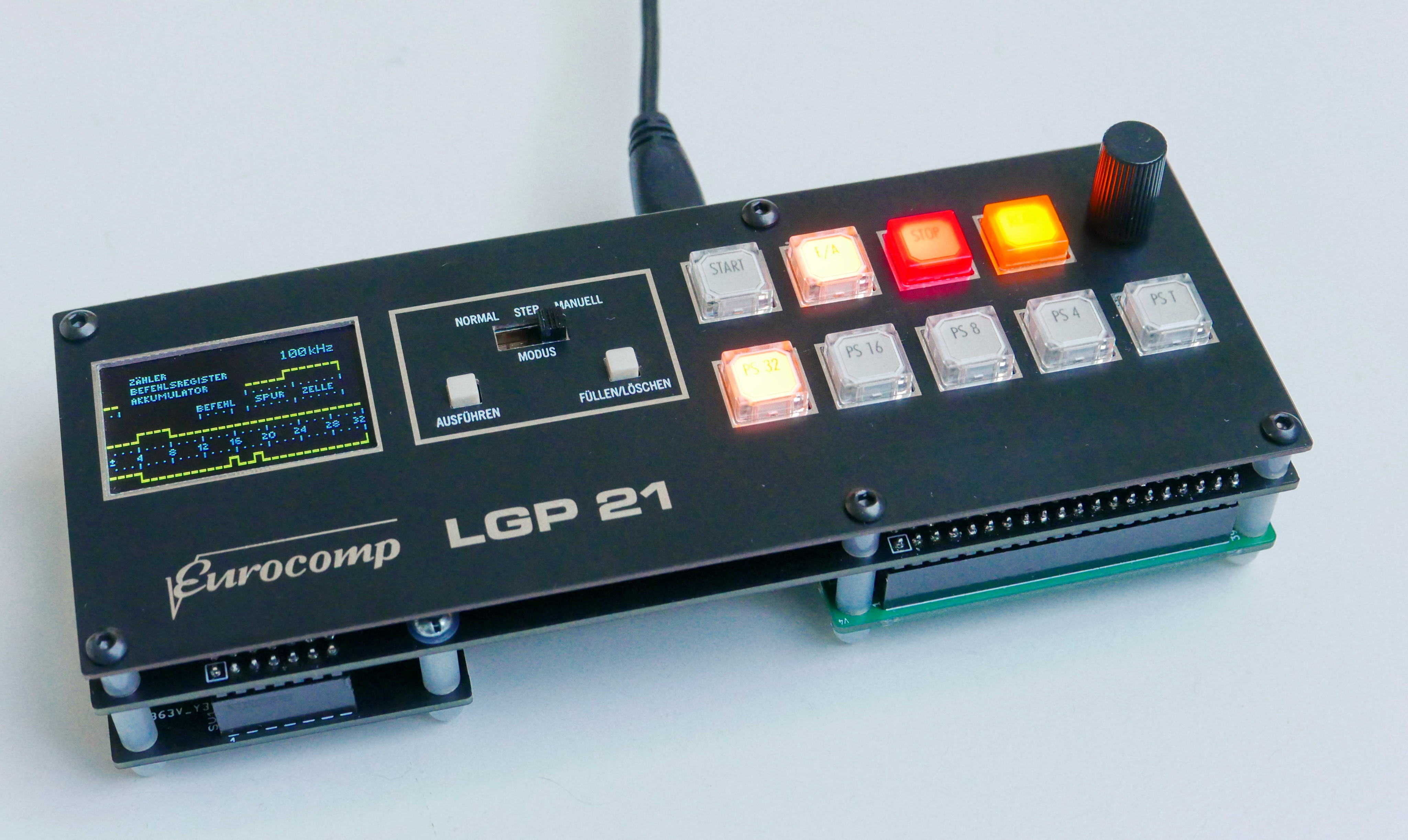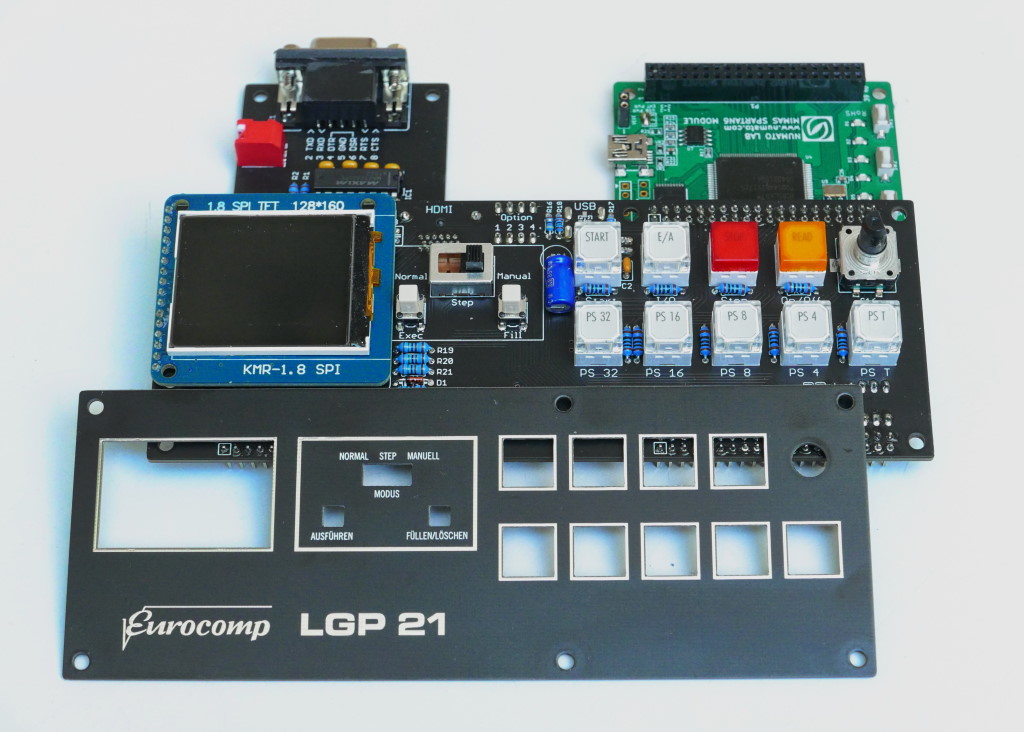© 1999-2023 Jürgen Müller
juergen@e-basteln.de
Yes, this feels like a bit of a rehash of my LGP-30 and RPC-4000 replicas… The three computers were quite similar in their architecture, and so are the replicas:
Like its predecessors, the LGP-21 replica is based on the low-cost Numato Mimas (Xilinx Spartan 6) FPGA development board. A custom front-end board provides all necessary user controls and I/O.
The FPGA implements the LGP-21 logic unit, translates characters from an external ASCII terminal to the code used by the LGP-21’s “Flexowriter” typewriter, and drives an LCD and an external HDMI display to visualize the inner workings of the LGP-21. The LGP-21 replica benefits from the nicer display I first used in the RPC-4000, and like the RPC-4000 it can address multiple peripherals via two USB serial channels and an optional RS-232 interface.

The handheld replica, based on a Spartan-6 FPGA.
I mainly developed the LGP-21 replica as a “practice run”, to familiarize myself with the computer architecture and make myself a tool to learn about its operation and software. The actual goal is to get a real LGP-21 up and running: The technikum29 has two of them, as well as a full complement of peripherals, and I hope to contribute to their restoration over the next months!
Nevertheless, the LGP-21 replica is a worthwhile little project. The look and feel of the replica is a bit closer to the real thing than the LittleGP-30; the various options and “hacks” available to upgrade the LGP-21 make it an interesting machine (and seem sufficiently well-documented to enable their replication in the miniature model); and – in contrast to the RPC-4000 – a large selection of software is waiting to be read from paper tape at the technikum29.
If you are interested in building your own, have a look at the project documentation below, and feel free to contact me about a PCB set; I still have a few spares.

The replica combines an off-the shelf FPGA board with a custom PCB for the user interface controls, and a front panel overlay which is also made from PCB material.
The LGP-21 replica is not quite done yet: The hardware is certainly ready, and the FPGA implementation is complete enough to allow first programs to run – including Blackjack, Librascope’s trusty trade show demo. Still on my to-do list:
As mentioned above, the FPGA code is still being improved, and the building and usage instructions are preliminary. But the replica is complete enough to run Blackjack, and that’s what matters after all ;-) – so here we go: